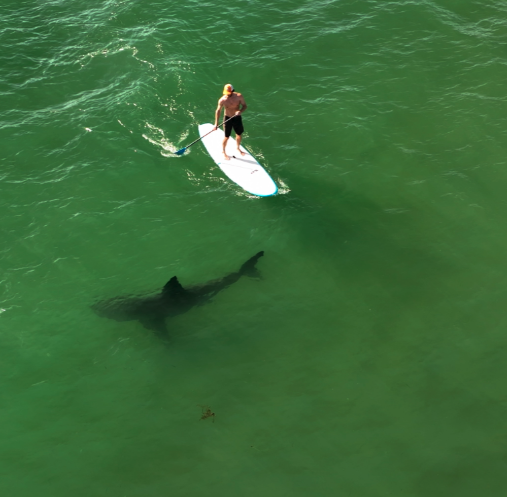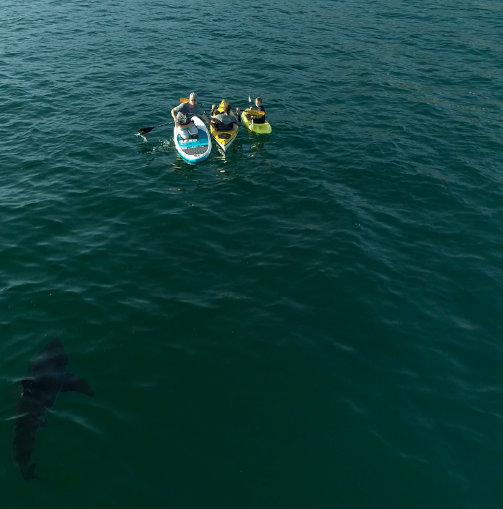Great white shark study lists Carpinteria as “hot spot” nursery for juveniles
SANTA BARBARA, Calif. - There are more sharks, more frequently, in near-shore waters right off our coast -- along with swimmers and surfers.

"They're using the beaches for safety, for food and for warmth. They're ignoring people," said Chris Lowe, Professor of Marine Biology and Director of the Shark Lab at California State University Long Beach (CSULB).
On Tuesday morning, he shared results from his team's two year long research project with Your News Channel. The group targeted 26 sites off California's coast and 40 juvenile great whites off the South Coast.
The shallow waters off Carpinteria, along with San Diego and Del Mar, are what Lowe called a "hotspot," a shark nursery for juvenile great whites.

"We know white sharks are probably born in around four, four and a half feet long. Females may give birth up to anywhere from two to 15 babies at a time. And then those babies are completely on their own. They get no parental care and that's when we start to see them show up at our beaches."
Food -- including sting rays -- is one draw for those less than 10 feet in size.
"What we found from some of our tagging of the bigger juveniles in Subadult is that they move between Santa Barbara, the Channel Islands, Morro Bay, and then they kind of bounce around that triangle area."
Large, mature sharks -- roughly 21 feet in size -- feed off places like Point Conception and Vandenberg.

Lowe points to protection and conservation for the increase in the great white shark population. The big question: is it less safe for people to be in near-shore waters?
"They're in and amongst people all the time. So we actually think the larger juveniles may actually learn to identify people. In other words, they can identify that's a swimmer, that's a surfer, that's a paddler. And as a result, kind of they become like freeway noise. You know, they kind of ignore it. It's there all the time."
Lowe said from his team's shark tagging, they're seeing the same juveniles coming back, year after year, for weeks to months at a time.
His message to the public?
"I think the reason why sharks aren't bothering people is because people aren't bothering the sharks. And our biggest worry is that people will think, oh, there's white sharks out there. I want to go get some video footage and I want to swim with them. That is the absolute wrong thing to do."
Lowe warns that chasing the sharks could change their behavior, make them more aggressive as they defend themselves.
"The same would be true for doing that with a wild bear or a wild wolf. So while seeing these cruel predators in their natural environment is really cool, we should give them their space."
Lowe says the more people know about sharks, the less they fear them. His research is part of a state funded program; funding runs out next year.
A fundraiser is happening June 17 at the Santa Barbara Maritime museum.
